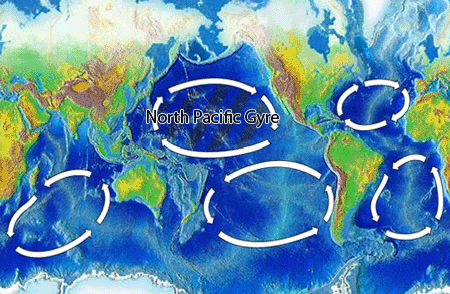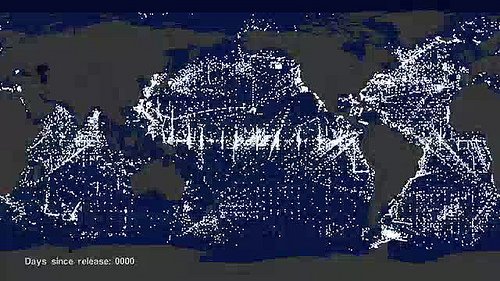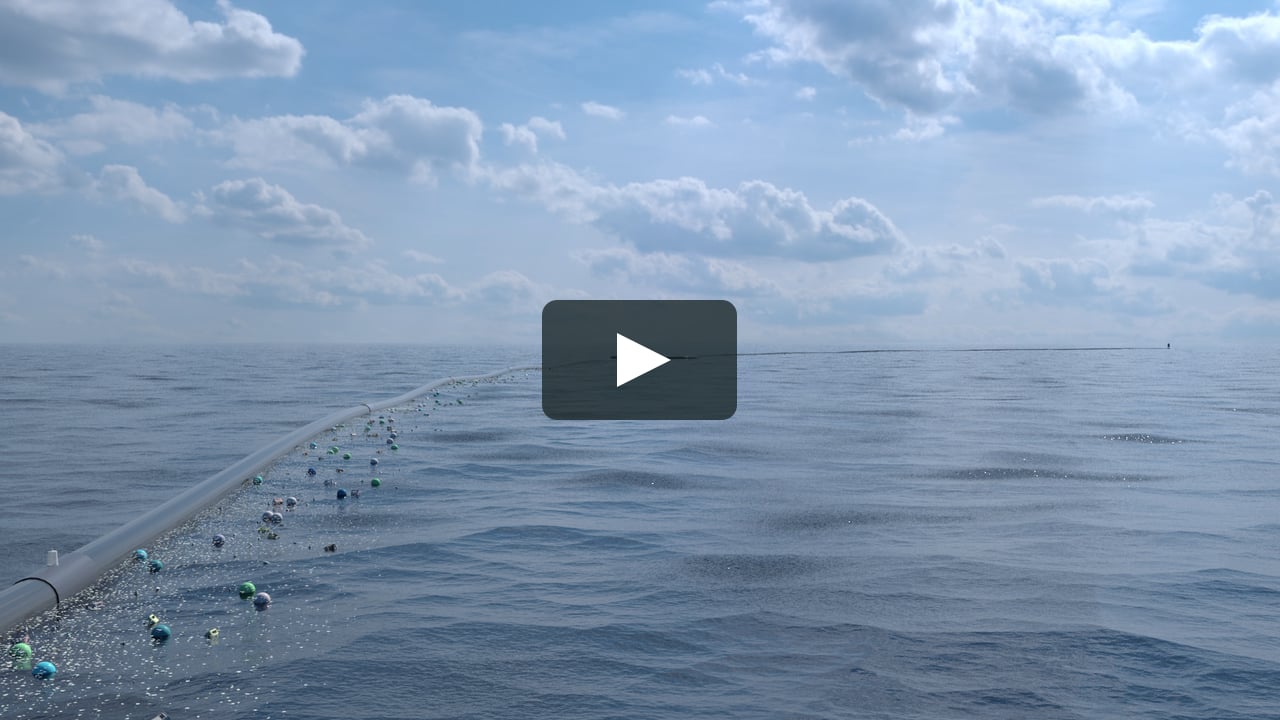GarBarge - An Ocean of Possibilities: My Engagement to the Steemstem Community

By Your Powers Combined.....

HOW WOULD YOU GO ABOUT CLEANING ALL THIS TRASH UP? WHAT SORT OF TECHNOLOGIES OR IDEAS WOULD YOU USE?
Problem
A recent study found that since the 1950s humans have made 9.1 billion tons of plastic; equivalent to the weight of 93,000 of the world’s heaviest aircraft carriers.
Gyres are large systems of circulating ocean currents, kind of like slow-moving whirlpools. Though the oceans are home to many gyres, there are five—the North Atlantic Gyre, the South Atlantic Gyre, the North Pacific Gyre, the South Pacific Gyre, and the Indian Ocean Gyre—that have a significant impact on the ocean. The big five help drive the so-called oceanic conveyor belt that helps circulate ocean waters around the globe. But in doing so, they also draw in the pollution that we release in coastal areas.

Plastics are now one of the most common pollutants of ocean waters worldwide. Pushed by winds, tides and currents, plastic particles form with other debris into large swirling glutinous accumulation zones, known to oceanographers as gyres, which comprise as much as 40 percent of the planet’s ocean surface — roughly 25 percent of the entire earth.
No scientist, environmentalist, entrepreneur, national or international government agency has yet been able to establish a comprehensive way of recycling the plastic trash that covers our land and inevitably blows and washes down to the sea.
The researchers say the density of trash was the highest recorded anywhere in the world, despite Henderson Island's extreme remoteness. The island is located about halfway between New Zealand and Chile and is recognized as a UNESCO world heritage site.
Plastic is so ubiquitous on Midway that every single albatross on the island will likely die with a stomach full of it. A typical albatross stomach includes “stuff about the size of a cigarette lighter – everything from golf balls to shotgun shells, or chunks of plastic that used to be something bigger,” according to Bret Wolfe, deputy manager of the Midway Atoll National Wildlife Refuge. When birds die and decompose, the plastic in their guts remains. “Anywhere you see a big pile of plastic but nothing else,” Wolfe said, “that’s where an albatross died.”


They found that every kilogram of sand on European beaches contained on average 250 fragments of microplastic. In some locations the number can be even higher, a spot in Iceland had 700 microplastics per kilogram, in Italy it was as high as 1,500 per kilogram. Bosker has already found relatively high levels in the Netherlands, with 500 fragments per kilo on the beach near to The Hague. These findings were part of a larger-scale investigation of microplastics on European beaches. The researchers, both of whom are affiliated to Leiden University College and the Institute of Environmental Sciences at Leiden University, analysed a total of 23 locations in 13 different European countries.
Plastic Breaks Down in Ocean, After All -- And Fast:
Left behind in the water were the same compounds detected in the ocean samples, such as styrene trimer, a polystyrene by-product, and bisphenol A, a chemical used in hard plastics such as reusable water bottles and the linings of aluminum cans.
Plastic hits marine creatures with a double whammy, Moore said. Along with the toxic chemicals released from the breakdown of plastic, animals also take in other chemicals that the plastic has accumulated from outside sources in the water.
Possible Solutions
The team from SAS Ocean Phoenix, a maritime engineering company based in the South of France, wants to tackle the trash problem with a massive cleanup ship, as big as the world's largest supertanker, which would ply the polluted Pacific. The boat would suck ocean water into chambers between its parallel hulls, where a series of filters would catch first the big chunks of plastic, then successively smaller pieces.
Two 30-mile-long floating booms would catch plastic debris in screens that descended into the water, and their V shape would naturally funnel the waste toward a central collection platform. A small prototype boom is currently being tested in the North Sea.
Boyan Slat, TOC’s charismatic young founder, came up with his array design while studying aerospace engineering at Delft University of Technology. No one would take the technology forward until Slat gave a TEDx Delft talk in 2012, ‘How the Oceans can Clean Themselves’. Since then, he has raised over $2m in crowdfunding from more than 38,000 funders in 160 countries.
I would like to put forth a series of ideas for you to either build upon, outright deny or just bring about discussion. That was the point of this post
YouTuber Ichini Shichi, shows the surprisingly simple process of converting plastic waste back into the oil from whence it came. In it, a Japanese man takes plastic containers, bottles and bags, shoves them all in a machine and then, hey presto, out comes diesel, kerosene and gasoline. It looks so easy it makes you wonder why we're not doing this all the time. Well, there's a reason for that - the process is known as anhydrous pyrolysis, and despite how simple it looks, it's unfortunately not considered very effective because it uses up a lot more energy than it creates.
How Iceland became the bitcoin miners’ paradise:
The answer is simple: location, location and volcanoes. Volcanoes provide Iceland with a cheap and abundant form of renewable energy. Geothermal and hydroelectric plants abound on the island, driving down the wholesale cost of power, which lets bitcoin miners make higher profits as they run their computers 24/7, 365 days a year.
Popular Science: Want More?
The New York Times
The Chicago Tribune
Science Line: The Shortest Distance Between You And Science
Phys.org
National Geographic: Reporting Your World Daily
Sierra Magazine: The National Magazine Of The Sierra Club
Engineering And Technology
Science Alert
The Guardian: US Edition



We could make automated robots/boats that go about collecting trash throughout the ocean.
There are small-scale systems like this in place already. It's a good concept but not effective on a wide scale, yet. Works wonders around marinas and boat docks though!
Thanks for mentioning my little rant and glad it kind of got you fired up to write this wonderful post.
I believe a small-scale version of
this is already in place. It's definitely a first step towards cleaning the ocean and its environment, but large-scale would cause greater issues with this type in my opinion.
Viable Local Solution?
Gather & melt for gas? As illustrated by this (LMGTFY) #Japanese #Inventor reported on BigThink by author Maria Popova.
Contemplation
Alas, Eye fear we are naive as to the sheer scale of this plastic particulate degradation and the implications for all of life to come the next 50-150 years.
We're forced to observe how nature will incorporate it throughout flora & fauna.
The sooner we stop using, buying and start cleaning up, the less of an evolutionary backlash for generations to come across the globe.
Alternatives?
There was also this younger #Chinese inventor that suggested autonomous drone fleets etc et al.
#Lots of #Work #Opportunity (screaming out loud)
Introspection and reflecting
But the change starts with ME, do I buy something in a plastic wrapping, or not? Can I pick that PET-bottle up to the closest thrash can, or not? Do I perhaps have the opportunity to start a plastic-petroleum venture in a nation that disregards this lucrative waste product?
#Human #Waste is #Big #Dollars
And now I'm beyond bored focusing on this gargantuan issue, only one amongst even larger and more pressing matters in a world of #Archons.
Adieu 🙏